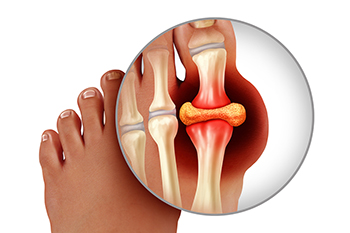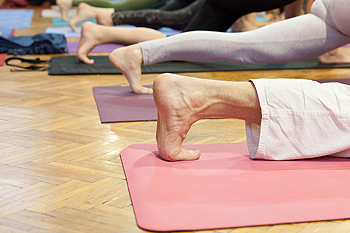Connect With Us
Blog
Items filtered by date: May 2025
Features to Look for in Long Distance Running Shoes

Choosing the right long distance running shoes is essential for comfort, performance, and injury prevention. One important factor is the weight of the shoe, as lighter options can reduce fatigue over long distances. The type of terrain also plays a role, with trail shoes offering better grip and protection, while road shoes provide smoother soles for pavement running. Cushioning is vital for absorbing impact and reducing stress on joints, especially during extended runs. Heel drop, or the height difference between the heel and toe, affects stride and should match your running style and body mechanics. Support features, such as arch support and heel stability, help maintain proper alignment and prevent overuse injuries. If you have foot pain from wearing the wrong type of shoes while running, it is suggested that you consult a podiatrist who can treat various foot conditions and educate you further on proper running shoes.
If you are a runner, wearing the right running shoe is essential. For more information, contact David Carmack, DPM from Texas. Our doctor can provide the care you need to keep you pain-free and on your feet.
Choosing the Right Running Shoe for Your Foot Type
To increase performance and avoid the risk of injury, it is important to choose the right running shoe based on your foot type. The general design of running shoes revolves around pronation, which is how the ankle rolls from outside to inside when the foot strikes the ground.
- Neutral runners are able to choose from a wide variety of shoes, including minimalist shoes or even going barefoot.
- Runners who overpronate, or experience an over-abundance of ankle rolling, should choose shoes that provide extra motion control and stability.
- Runners who underpronate, or supinate, have feet that have high arches and lack flexibility, preventing shock absorption. They require shoes with more flexibility and cushion.
If you have any questions, please feel free to contact our office located in Marble Falls, TX . We offer the newest diagnostic and treatment technologies for all your foot care needs.
How Gout Affects the Feet

Gout is a form of arthritis that often affects the foot, especially the joint at the base of the big toe. It occurs when high levels of uric acid in the blood lead to the formation of sharp crystals that collect in the joints. A gout attack in the foot may cause sudden pain, swelling, redness, and warmth, typically beginning at night and worsening quickly. Over time, repeated attacks can lead to joint stiffness, and, in some cases, the development of hard lumps called tophi, which may damage nearby bone and cartilage. A podiatrist can diagnose gout through joint fluid analysis, imaging, or blood tests. Medical treatment may involve anti-inflammatory medication or corticosteroid injections to reduce pain and swelling. In cases of chronic gout, long-term strategies to lower uric acid levels may be needed to prevent joint damage. If you have pain caused by gout, it is suggested that you are under the care of a podiatrist for appropriate treatment.
Gout is a painful condition that can be treated. If you are seeking treatment, contact David Carmack, DPM from Texas. Our doctor will treat your foot and ankle needs.
What Is Gout?
Gout is a form of arthritis that is characterized by sudden, severe attacks of pain, redness, and tenderness in the joints. The condition usually affects the joint at the base of the big toe. A gout attack can occur at any random time, such as the middle of the night while you are asleep.
Symptoms
- Intense Joint Pain - Usually around the large joint of your big toe, and it most severe within the first four to twelve hours
- Lingering Discomfort - Joint discomfort may last from a few days to a few weeks
- Inflammation and Redness -Affected joints may become swollen, tender, warm and red
- Limited Range of Motion - May experience a decrease in joint mobility
Risk Factors
- Genetics - If family members have gout, you’re more likely to have it
- Medications - Diuretic medications can raise uric acid levels
- Gender/Age - Gout is more common in men until the age of 60. It is believed that estrogen protects women until that point
- Diet - Eating red meat and shellfish increases your risk
- Alcohol - Having more than two alcoholic drinks per day increases your risk
- Obesity - Obese people are at a higher risk for gout
Prior to visiting your podiatrist to receive treatment for gout, there are a few things you should do beforehand. If you have gout you should write down your symptoms--including when they started and how often you experience them, important medical information you may have, and any questions you may have. Writing down these three things will help your podiatrist in assessing your specific situation so that he or she may provide the best route of treatment for you.
If you have any questions, please feel free to contact our office located in Marble Falls, TX . We offer the newest diagnostic and treatment technologies for all your foot care needs.
Do Your Child's Feet Hurt?
Daily Foot Yoga Stretches for Strength and Flexibility

Practicing foot yoga stretches each day can improve flexibility, circulation, and overall foot comfort. Seated ankle rotations where you gently circle the foot clockwise and counterclockwise can help loosen tight joints and increase mobility. Moving through downward facing dog with soft knee bends, where heels reach toward the floor and knees bend slightly, allows a gradual stretch through the calves, heels, and arches while supporting the whole body. Garland pose, a deep squat with feet flat and elbows pressing into the inner knees, opens the hips and stretches the soles of the feet, encouraging strength and balance. Additionally, the bound angle pose with a gentle foot massage, where the soles of the feet touch and hands massage them, combines relaxation with stimulation of pressure points, promoting circulation and releasing tension. These simple stretches can be done at home and offer lasting benefits for both active individuals and those who spend long hours on their feet. If your feet have become stiff, it is suggested that you consult a podiatrist who can provide appropriate treatment options.
Stretching the feet is a great way to prevent injuries. If you have any concerns with your feet consult with David Carmack, DPM from Texas. Our doctor will assess your condition and provide you with quality foot and ankle treatment.
Stretching the Feet
Stretching the muscles in the foot is an important part in any physical activity. Feet that are tight can lead to less flexibility and make you more prone to injury. One of the most common forms of foot pain, plantar fasciitis, can be stretched out to help ease the pain. Stretching can not only ease pain from plantar fasciitis but also prevent it as well. However, it is important to see a podiatrist first if stretching is right for you. Podiatrists can also recommend other ways to stretch your feet. Once you know whether stretching is right for you, here are some excellent stretches you can do.
- Using a foam roller or any cylindrical object (a water bottle or soda can will do), roll the object under your foot back and forth. You should also exert pressure on the object. Be sure to do this to both feet for a minute. Do this exercise three times each.
- Similar to the previous one, take a ball, such as a tennis ball, and roll it under your foot while seated and exert pressure on it.
- Grab a resistance band or towel and take a seat. If you are using a towel, fold it length wise. Next put either one between the ball of your foot and heel and pull with both hands on each side towards you. Hold this for 15 seconds and then switch feet. Do this three times for each foot.
- Finally hold your big toe while crossing one leg over the other. Pull the toe towards you and hold for 15 seconds. Once again do this three times per foot.
It is best to go easy when first stretching your foot and work your way up. If your foot starts hurting, stop exercising and ice and rest the foot. It is advised to then see a podiatrist for help.
If you have any questions please contact our office located in Marble Falls, TX . We offer the newest diagnostic and treatment technologies for all your foot and ankle needs.
Benefits of Surgery for Flat Feet

For individuals with severe or painful flat feet that do not respond to conservative treatments, surgery can offer significant benefits. Surgical correction aims to restore the natural arch, improve foot alignment, and relieve chronic pain that limits daily activities. By addressing the structural problems directly, surgery can lead to improved gait mechanics and better weight distribution across the foot. This helps reduce stress on the ankles, knees, hips, and lower back, often alleviating associated discomfort in these areas. Surgery also offers the potential for long-term correction, providing greater stability and preventing the progression of deformities. For many patients, successful surgical intervention can mean a return to a more active lifestyle. If you have flat feet that are causing you pain and discomfort, it is suggested that you are under the care of a podiatrist who can offer effective treatment solutions, which may include surgery.
Foot surgery is sometimes necessary to treat a foot ailment. To learn more, contact David Carmack, DPM of Texas. Our doctor will assist you with all of your foot and ankle needs.
When Is Surgery Necessary?
Foot and ankle surgery is generally reserved for cases in which less invasive, conservative procedures have failed to alleviate the problem. Some of the cases in which surgery may be necessary include:
- Removing foot deformities like bunions and bone spurs
- Severe arthritis that has caused bone issues
- Cosmetic reconstruction
What Types of Surgery Are There?
The type of surgery you receive will depend on the nature of the problem you have. Some of the possible surgeries include:
- Bunionectomy for painful bunions
- Surgical fusion for realignment of bones
- Neuropathy decompression surgery to treat nerve damage
Benefits of Surgery
Although surgery is usually a last resort, it can provide more complete pain relief compared to non-surgical methods and may allow you to finally resume full activity.
Surgical techniques have also become increasingly sophisticated. Techniques like endoscopic surgery allow for smaller incisions and faster recovery times.
If you have any questions, please feel free to contact our office located in Marble Falls, TX . We offer the newest diagnostic and treatment technologies for all your foot care needs.
Blog Archives
- December 2025
- November 2025
- October 2025
- September 2025
- August 2025
- July 2025
- June 2025
- May 2025
- April 2025
- March 2025
- February 2025
- January 2025
- December 2024
- November 2024
- October 2024
- September 2024
- August 2024
- July 2024
- June 2024
- May 2024
- April 2024
- March 2024
- February 2024
- January 2024
- December 2023
- November 2023
- October 2023
- September 2023
- August 2023
- July 2023
- June 2023
- May 2023
- April 2023
- March 2023
- February 2023
- January 2023
- December 2022
- November 2022
- October 2022
- September 2022
- August 2022
- July 2022
- June 2022
- May 2022

